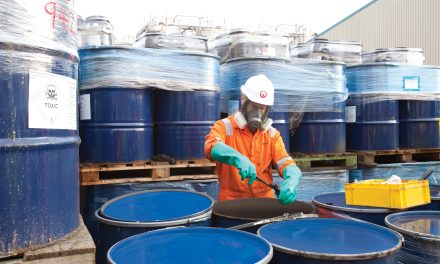Escalator safety is a complicated area in which a number of different regulations apply, leaving businesses and organisations unsure of their responsibilities. Here, Jeff Kennedy, technical manager of Lifts & Escalators at Bureau Veritas, explores the application of PUWER and how to navigate through the grey areas where both employees and the public will be using escalators in the same building.
Escalators and moving walks provide a convenient, practical and relatively safe way of transporting people. However, this type of transportation does create potential hazards, and accidents and incidents that involve users are much greater from escalators and moving walks than with lifts.
One reason is inherent in the functionality of escalators and moving walks. Potential hazards include; loose clothing, type of footwear, carried goods and equipment misuse, all of which the duty holder must take into consideration. A second factor, and the one can be widely overlooked, is the location of where the equipment is installed, which can cause a grey area for the owner regarding which regulations apply, and can result in a thorough examination being overlooked.
Once an escalator is installed, a robust risk assessment, preventative maintenance, testing, inspection and thorough examination are all critical to ensure longevity, reliability and, above all, safety. However, the extent to which these are carried out can depend on the regulations governing the equipment.
Escalators and moving walkways are predominantly in public places, rather than workplaces, and they are not a statutory item covered under the Lifting Operations and Lifting Equipment Regulations 1998 (LOLER). This means that they are often overlooked from a thorough examination point of view and are just maintained rather than inspected.
THE REGULATION
Depending on location, building owners will have to consider; Provision of Use of Work Equipment Regulations (PUWER), Regulation 19 of the Workplace (Health, Safety and Welfare) Regulations 1992 and the Health & Safety at Work Act 1974.
Escalators provided for use by workers in workplaces are subject to inspections governed by PUWER. These regulations place duties on people and companies who own, operate or have control over work equipment, and the responsibilities lie with businesses and organisations whose employees use work equipment, whether owned by them or not.
This means firms must ensure their escalators are maintained in an efficient state, are in working order and in good repair; keep maintenance logs up to date; inspected after installation and before being put into use, and if exposed to deteriorating conditions liable to result in dangerous situations, they must be inspected to ensure faults are detected in good time so the risk to health and safety is managed.
In cases where escalators are not used by people at work, such as shopping centres and airports, PUWER is not applicable. However, the duty holder still has responsibility for health and safety for people they don’t employ, under the Regulation 19 of the Workplace (Health, Safety and Welfare) Regulations 1992 and the Health & Safety at Work Act 1974.
ENSURING SAFE ESCALATORS
The risks of using escalators and moving walkways can be the same whether they are in a public place or working environment. This means that the regime of maintenance, inspection and examination required under PUWER, may be entirely practicable in managing the risks. This is evidenced by many insurers imposing demands for similar levels of risk management to cover public liability.
To assist businesses and organisations, the Safety Assessment Federation in consultation with HSE, has prepared guidelines for the safe operation of escalators and moving walks. This guidance is purely advisory, not mandatory. Yet, it will normally be regarded as sufficient to comply with the relevant health and safety rules.
The guidelines provide owners and other duty holders recommendations on risk control, and reduction to help prevent accidents as well as technical advice on testing and examination, reporting formats and suitable periodicities between examinations and tests. The guidelines are considered necessary for a number of reasons:
• Escalators pose a risk to users, as supported by statistics of accidents and incidents, which require adequate management;
• Escalators and moving walks are becoming more prevalent, more complex (inclined, curved etc), longer, higher and with increasingly exposed voids;
• Escalators are increasingly subject to abuse, misuse and negligence;
• The integration of escalators and moving walks within buildings as a means of moving large numbers of people require a wider range of competence than merely architectural design considerations;
• In some cases, escalators and moving walks are the primary escape route/emergency exit, e.g. the London Underground;
A key element is the call for a thorough examination of escalators and moving walkways, normally at six-monthly intervals. The scope and exact periodicity is the responsibility of the competent person undertaking the thorough examination. Owners and duty holders should note that when selecting this individual, as well as ensuring they have the required practical and theoretical knowledge of the equipment, they should confirm that the person is sufficiently independent and impartial to allow them to make an objective assessment. For this reason, it is not advisable for the same person who performs maintenance work, to carry out the examination, as they will be assessing their own work.
To ensure the competent person meets the required criteria, many organisations use an external supplier, such as Bureau Veritas. We would recommend that you conduct research when selecting a supplier as the level of inspection can vary. For example, when we provide these, we always conduct an internal inspection, removing the steps/pallets, in every inspection, rather than just conducting a visual, mid-year inspection.
The mix of private/public regulations have left many businesses in the dark on the regulations covering escalators/moving walks. However, by seeking independent advice and following guidelines, such as those created by the Safety Assessment Federation, organisations will be well placed to ensure longevity, reliability and, above all, safety.
Visit www.bureauveritas.co.uk for more information.




